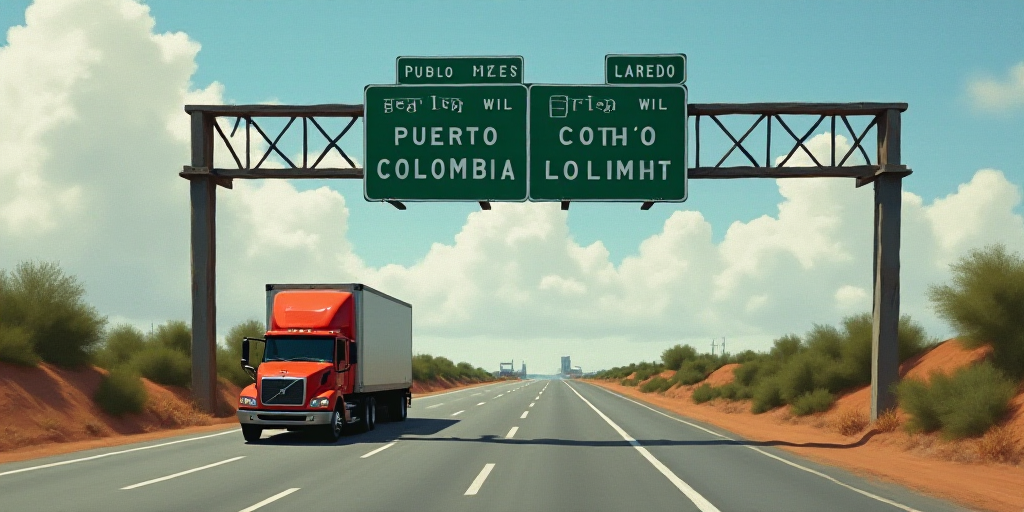Introduction to Port Laredo and its Strategic Importance
Port Laredo, a crucial terrestrial port in Mexico and a strategic hub for international trade, has gained prominence due to its specialized infrastructure. This includes multiple crossings such as the International Commerce World Bridge, Juárez-Lincoln, and Colombia-Solidaridad. The port also boasts customs facilities, bonded warehouses, cold storage, and the capability to handle hazardous materials. Javier Amieva, Director of Hispanic International, emphasized the need to bolster this zone with significant binational investments in infrastructure.
Major Investments in Port Laredo Infrastructure
Recently, Nuevo León announced a $1.6 billion investment in “Green Corridors,” which will be complemented by resources from the U.S. federal government, Texas state government, Laredo city government, and private investors. The total investment is projected to range between $12 billion and $17 billion over the next six years for warehouse infrastructure.
Projected Crossings Over Five Years
Port Laredo has become the leading terrestrial port in the U.S., with over 20,000 trucks crossing daily and an annual trade value exceeding $395 billion, as stated by Javier Amieva. Gregorio Elizondo García, Head of Promotion for Puerto Colombia, mentioned that around 8,000 trailer crossings occur daily, with a target of 20,000 by 2030—more than doubling the current volume within five years, requiring an average annual growth of approximately 15%.
Addressing Trade Flow Limitations with the U.S.
Mexico faces challenges in customs training, which restricts trade flow between Mexico and the U.S. The 2025 Monterrey Border Perspectives Congress will bring together experts in international trade and customs law to tackle critical issues such as compliance challenges with the IMMEX Program and IVA-IEPS Certification; Strategic Customs Inspection and its benefits; as well as Customs Documentation and compliance within the rules of origin framework.
Key Discussion Points at the Congress
Daniel Guzmán, Director of the National Center for Competitiveness in Foreign Trade (Cencomex), highlighted that one significant discussion point will be the Customs Law Reform, which comes after 20 years of no changes. There will be 55 new agents, over 40 patents to be canceled, and modifications in the Foreign Trade Law. Therefore, it’s essential for importers and exporters to understand these legal changes.
One such change involves digital audits for IMMEX program companies, often leaving uncertainty about when these audits occur. Pedro Trejo Vargas, partner and director of Commerce Consulting and Services ENCOR, will address this topic.
Event Organization
The event is organized by Cencomex, Hispanic International, with the participation of the State Frontier Development Corporation (Codefront).
Key Questions and Answers
- What is the significance of Port Laredo? Port Laredo is a vital terrestrial port in Mexico, facilitating international trade through its specialized infrastructure and multiple crossings.
- Why is there a need for major investments in Port Laredo infrastructure? Binational investments are crucial to strengthen Port Laredo, ensuring it can handle growing trade volumes and remain competitive.
- What are the projected crossings for Port Laredo over the next five years? The target is to more than double the current volume, reaching 20,000 trailer crossings by 2030.
- What challenges does Mexico face in trade with the U.S., and how will the Congress address them? Mexico faces customs training challenges, which restrict trade flow with the U.S. The Congress will bring together experts to discuss critical issues like compliance, customs inspections, and legal changes in foreign trade law.






